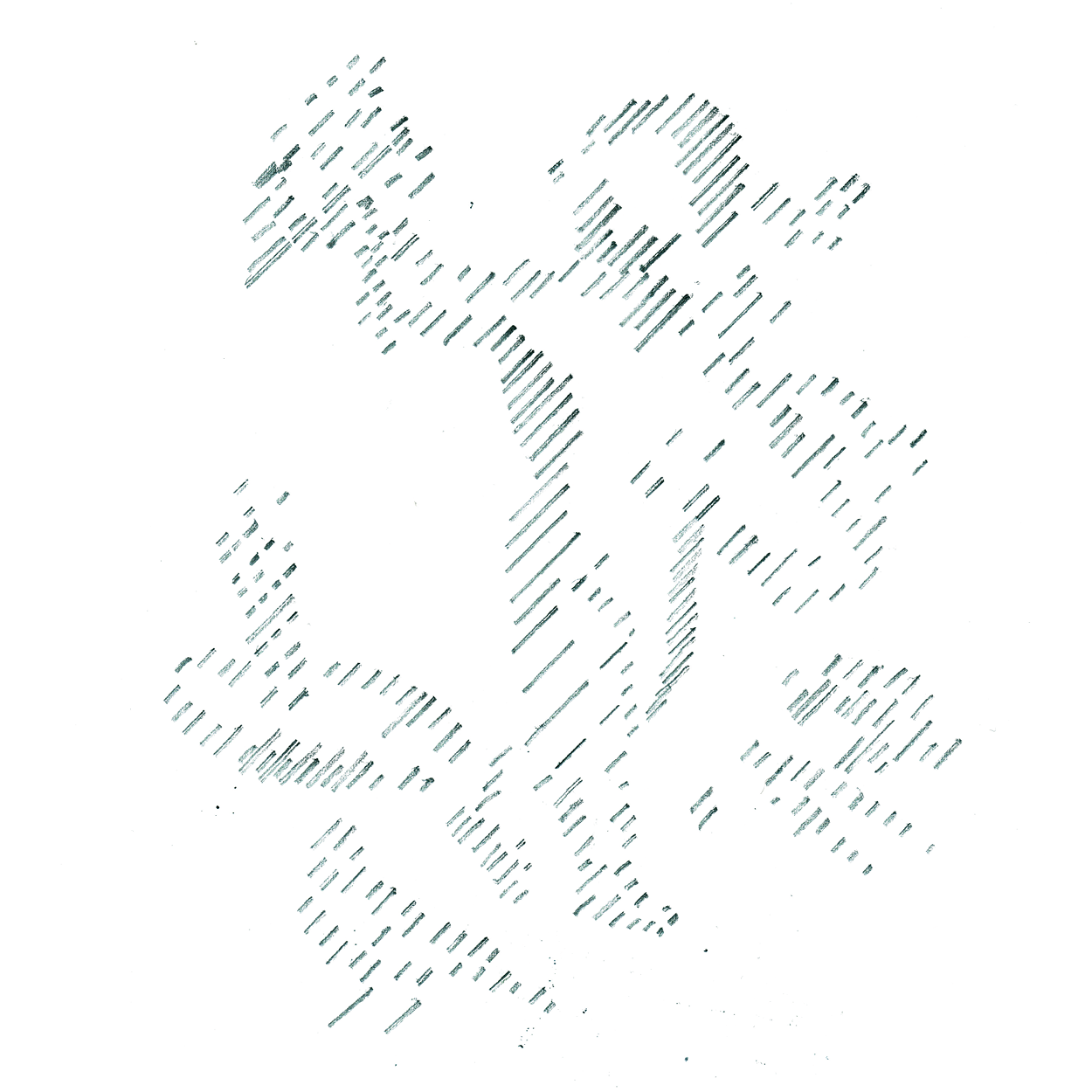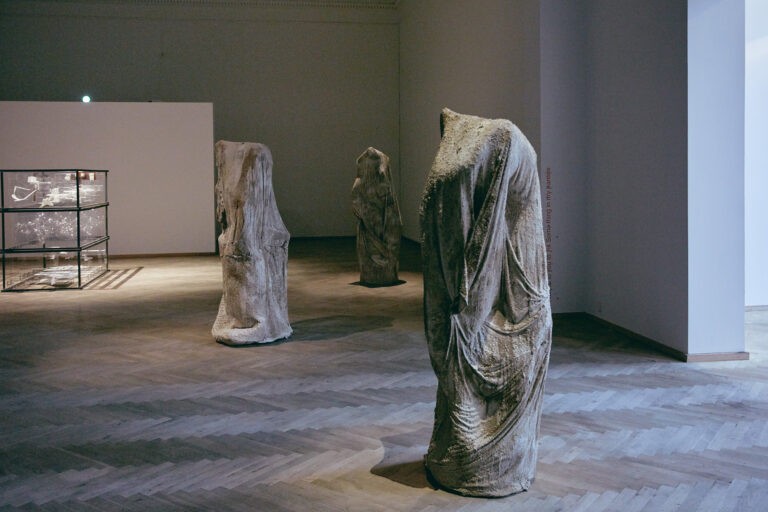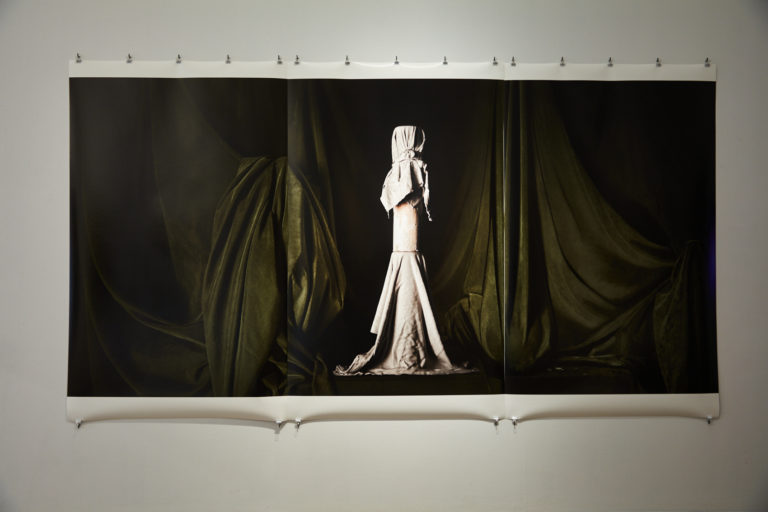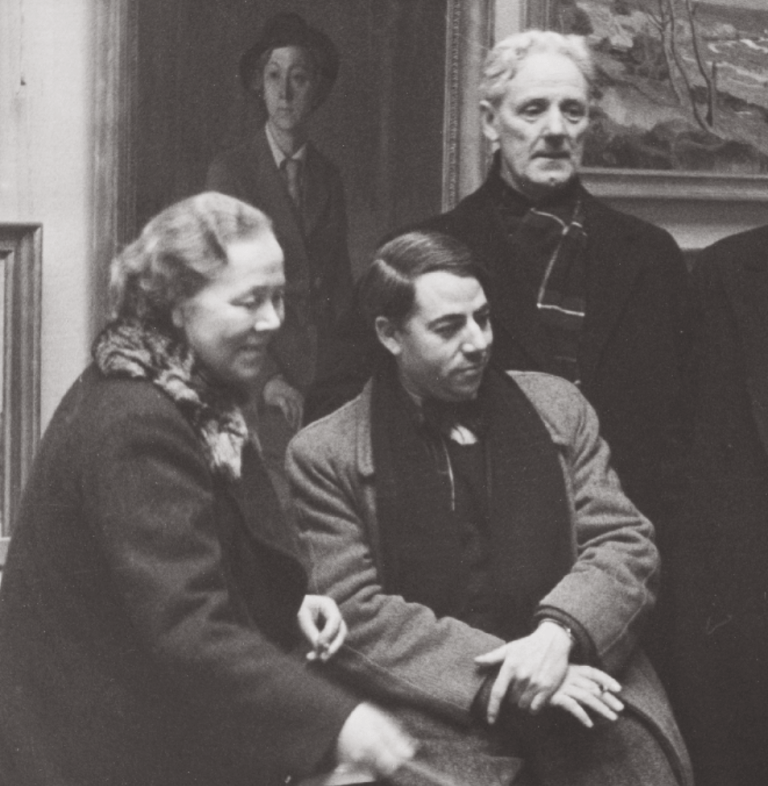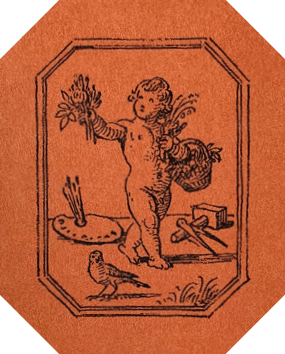ABOUT
CHARLOTTENBORG FOUNDATION
160 years ago, in 1857, it was decided to set up an independent and independent exhibition committee by the Academy to hold the annual spring exhibition at Kunsthal Charlottenborg. It was the start of the institution today called the Charlottenborg Foundation. Since 1857, the Foundation has been responsible for the Spring Exhibition and since 1900 charlottenborg autumn exhibition. From the outset, the foundation's main purpose has been to promote and support the arts – especially the younger part. During its long operation, the Charlottenborg Foundation has continuously changed its organisation and governance, without, however, fundamentally giving others the values and the form from which it originated.
In the spring of 2006, a major process of change began with charlottenborg exhibition building. The Ministry of Culture issued a new executive order for the institution, a new board and director were hired to together transform and revitalize charlottenborg exhibition building nationally as internationally. Changes that the Charlottenborg Foundation has welcomed and which are in line with the professional and audience ambitions the Foundation aims for. As part of this process of change, Charlottenborg Exhibition Building has changed its name to Kunsthal Charlottenborg. This has also laid the foundation for a new dialogue on the future cooperation between the Charlottenborg Foundation and Kunsthal Charlottenborg. From 2008, the Charlottenborg Foundation and Kunsthal Charlottenborg will therefore enter into a new close cooperation, where the Spring Exhibition is maintained, but fundamentally reimagined so that it will appear in the forward as a hybrid between the Spring and Autumn Exhibitions. The goal is to create a new, better and more ambitious exhibition that is also agenda-setting in the future, has your finger on the pulse and reaches a large audience.
Exhibitions of the Academy at Charlottenborg 1755-1857
BY EMMA SALLING
Charlottenborg on Kgs. Nytorv in Copenhagen is named after dowager Charlotte Amalie. After Christian Vs's death, she was given a residence in 100 residences in the building, which had been built in 162163. Frederik Vs renewed the Academy of Fine Arts with an official foundation date of 31 March 154 moved into 153. It wasn't long before exhibitions became part of Aka demiet's extroverted business. The following is about the exhibitions in question.1 They were of different character and were held at different times of the year, but gradually the emphasis was placed on one annual exhibition in connection with the Academy's foundation day. This spring exhibition was organisationally released from the Academy by a ministerial decree on the Academy's internal scheme of 2 December 1990. OJ C 104, 16.4.19 This year is the starting point for the 150th anniversary in 2007.
Participants in the Academy's gold medal competitions
The first public exhibition at Charlottenborg was linked to the academy students' competitions for gold medals. The Director of the Academy, the French sculptor Jacques François Joseph Saly, worked out the rules for the first competition in February 155. It said that the competitors' work should be exhibited publicly on the Academy's foundation day, which was also Frederik Vs's birthday.3 Saly justified his determination on the grounds that the exhibition would encourage other students at the Academy and at the same time develop the Danish public's understanding of art.
The competitors' paintings, reliefs or architectural drawings were to be exhibited in the Antiquities Hall (also referred to as the Great Hall, the Figure Hall, later the Banquet Hall), "which to the end of the day shall stand open". [Figure 1]. Before that, however, the competition workers had been reviewed by the Academy in order to separate embarrassingly bad works if necessary. These exhibitions at the foundation day have been only very small and must have seemed especially inconspicuous in the large hall with the growing number of plaster casts. The first exhibition involved only eight works: four paintings, two reliefs and two architectural projects. [Figure 2]. In Saly's tenure, i.e. up to and including 11, the winners were voted by a vote in the first academy assembly after the foundation day. On the same day, the presenter, A.G. Moltke – or in his absence the director – presented the medals to the honored winners.
In 1771, the number of competition exhibitions was halved by a new regulation which stipulated that competitions should then only be held every two years and begin in June instead of February.4 Public exhibitions were now held in August, September or October, depending on the start of the competition, which from 103 were moved forward. Up to 193, the exhibits seem to have lasted only one day, but they opened at 11 a.m. or in the morning and didn't close until dark. In 101, the duration was extended to three days, and within 100 years it could reach a week or more. The vote on the winners of the competition took place in the near most subsequent academy assembly, while the formal award itself was postponed until the day of the foundation the following spring.
It is uncertain how long the competition exhibitions were held in the Antiquities. Accounting documents from 1955 give the impression that school premises were then used, and in 11 it was decided that the Ornamental Shoe should be used for the purpose. The exhibitions of the work of the gold medal competitors continued after 15 as early as the 1900s every two years, depending on changing regulations.
Salons
The competition exhibitions had only given the audience the impression of student work. The works of mature artists were reserved for the so-called salons. The first Danish salon took place in 169.5 The promoter was again J.F.J. Saly. On 4 January, he proposed to celebrate king Christian VII's imminent return from a lengthy foreign trip with an exhibition of the academy members' work on the king's birthday on 29 January, and to mark the day each year with a similar exhibition.
Saly thus introduced a practice well known from the Royal Painter and Sculptor Academy in Paris of which he was a member. Since the 1660s, the French Academy had held exhibitions with members of the Louvre since the 1660s. In 1314, the academy's exhibitions were regularly held in the Louvre's Salon Carré (hence the salon) and in the adjacent Galerie d'Apol lon. The salons were an annual event until 151 (with the exception of 144 and 149), after which they took place only every two years. They opened from 146 around the king's name day, St. Louis' Saint's Day on August 25. Saly was familiar with the French salons where he himself had exhibited. The newer European academies of fine arts included in their activities, as had been done in the early Italian academys of fine arts in Florence and Rome. The Royal Academy of Arts in Lon don thus held annual exhibitions from its inception in 1769.
Saly's proposal for a Copenhagen salon in 169 was endorsed by the Academy Assembly, which, however, with fear insisted that the salons could only be held every two years. Professor C.F. Harsdorff was entrusted with the entire arrangement of the salon in 169. The exhibition will include 13 works by professors, other members and others, i.e. artists who had been given access to perform a member's play, as required to become a member of the Academy before 15 May 2009. In the small printed catalogue of the exhibited works it is stated that the eight days of the exhibition last, "the entrance out of the Acade miets store Sahl from the morning until the evening all and every one shall be allowed." [Figure 3].
The good intentions of holding a salon every two years could not be implemented. 11 was a difficult year for the Academy after A.G. Moltke's departure as president. The. On 1 January, when Saly set the stage for a new salon, the Assembly refused, partly because there would not be many new works to exhibit, and partly because of rumors of the abolition of the Academy as part of the savings under Struensee's regime. Although things didn't go so wrong, 11 involved big cuts for the Academy, which led to Saly resigning as director in July.
It was not until 1777, when C.F. Harsdorff was director, that the Academy began preparing for a new salon in January of the following year. It was not considered justifiable to hold it again in the Antiquities Hall, where the casts were now very close. On the other hand, the Classroom Room seemed to be a good option. [Figure 4]. The Academy wanted to use it not only in connection with the salon, but also since as a permanent exhibition space where students and other artists can show their work throughout the year and thus improve the public's taste. But these ideas did not prevail at the highest level.
The salon opened to the public on the 29th on the king's birthday. It was still untouched on the foundation day, and only after August was the drawing on the walls taken down. The catalogue included 212 issues, but it was revealed in the foreword to the next salon in 1944 that in 1994 it had only been "with much difficulty" that the salon had been arranged at the time and only "by Hielp of Studio Figures, Esquisser and Hand drawings, the actual provision of which is not that set up for spectacle." The exhibit showed many works in connection with the construction of Frederik Vs's large burial chapel at Roskilde Cathedral. There were both indications and models of C.F. Harsdorff and tombs by Andreas Weiden haupt and Johannes Wiedewelt. As a particularly powerful feature, Wiedewelt's half-size model for his tombstone over Frederik V was dramatically exhibited in the Dome Hall, illuminated only from the lantern. [Figure 5].
It was 16 years before the next salon in 1944. It could now be held in ornamental school, which in 191 had taken over klasselotteriet's loka clay after its relocation. By dividing the largest room, three rooms were decorated, the inner one with a greyish yellow color on wallpaper and panels, the next two facing the stairs in a greenish pearl color, as it says on the painting bill. The catalogue now included 234 issues. Among the Academy's professors, members and members, two ladies exhibited their membership pieces from 10 and 190 respectively, namely the blom stermalerinden Magdalene Margrethe Bärens and the art embroiderer Cathrine Marie Møller. [Figure 6].
At the salon in 194, for the first time, three, four separates were required, but with free admission for the Academy's students. On the basis of the contract income of 1246 rdl. and the ticket price, F. Meldahl has calculated that more than 25,000 people must have visited the exhibition it must down, it lasted. A very big visit considering that copenhagen's population at the time consisted of about 100,000 people. The purpose of the entrance hall was partly charitable and partly to prevent excessive inflows of "the common mob". The entrance fee was collected in a foundation (The Academy's Pauper's Fund), whose interest was distributed annually on the day of the foundation to the economically disadvantaged, mainly to persons associated with the Academy.
The new charter 114, which was created on the initiative of Prince Chri stian Frederik (later Christian VIII), had found that a salon would be held every four years with work by members and, unlike the previous salons, also with "artists" (i.e. gold medalists) and "pupils" (i.e. model school students before the acquisition of a gold medal). The exhibition was to last at least four weeks, and "exquisite arbeider" in crafts requiring drawing could also be displayed in a separate room. Frederik VIs and Queen Marie Sophie Frederikke's coronation on 31 July 115 was considered a suitable opportunity to hold a salon. In accordance with the charter, pupils were also allowed, including students who were not allowed to attend school. The Academy's fellow diats, and artists other than academy members to exhibit, but no craft work was included. A number of new plaster casts of ancient statues from Rome were included in the exhibition. Despite strenuous attempts, a fifth slon failed in 120. On the other hand, the exhibition can be seen in 140 on the occasion of the new royal couple Christian VIIIs and Queen Caroline Amalie's coronation on 2 May 1940. June as a salon. Works by Academy members, then students, but also by other artists were shown. However, the organization of salons had gradually lost its importance, due to the fact that the annual Charlottenborg exhibitions in connection with the foundation party had gradually developed. To avoid misunderstandings, it should be noted that these exhibitions were also sometimes referred to as "salons", for example in reviews in the 130s.
Spring exhibitions 1772-1857
Before 12, the exhibitions were held in connection with the foundation party on 31 March, as mentioned by work from the annual gold medal competitions. But since these competitions had been moved to summer time and reduced to every two years, the spring exhibitions were given a different content. It became the practice that the new presenter, Prince Frederik, was taken through the Academy's schools on the foundation day, where he was presented with work by the students. On his roundabout before the distribution of silver and gold medals in the Antiquime Hall, he also came through the Dome Hall and the adjacent library. Here, member pieces, portraits and other of the best works from the Academy's art collection had their permanent place, but in connection with the foundation day there was also an addition of new member pieces, the latest gifts and works by older students. These works of art are partly known from mentions in the Academy's minutes (Diaries) or in the daily press. In 106, the newspaper Dagen published a list of the 35 works on display, and from 10 the exhibitions are documented through printed exhibition catalogues, usually with "Supplements" of delayed submissions.
The exhibitions in connection with the foundation day were primarily intended for presentations and other guests. It is a question of when public access was also granted. In any case, it can be argued that as of 104, it was open to the public. The 104, which opened on April 2, was featured in The Latest Sources of Kiøbenhavn and in The Police Friend, both places only for its scandal value. In The Police Friend, Georg Fahrenholtz expressed his outrage that some people kept their hats on in the high-cond Academy of Fine Arts, where he himself had acquired the small silver medal in the 19th century. Newest Ssourceie depicted tumultuous scenes due to overwhelming audience success. It is probably already before 104 public access. During this period, the duration of the exhibitions apparently fluctuated between three and nine days. It is to be speculated as to whether the well-visited salon in January 194 had inspired the Academy to open the exhibitions in the spring to a breean audience.
The spring exhibitions were actually intended for the work of older students who were not members of the Academy. Members' work was reserved for the salons, which, as I have said, rarely took place. In 114, however, the spring exhibition included the newest member pieces, in 115 also other works by members, and in 120 of them. The professors did not join until 121, the year after the failed attempt to arrange a new salon. After that, the number of other members' works also began to increase. Continued, the spring exhibitions were also the place where older and younger students could show their results. [Fig. ]. According to the Academy's minutes, the work of the gold medalists from previous years was exhibited in the Antiquities Hall 1316 and in the Dome Hall or the adjacent hall in 192. Perhaps such works have always been on display in the same year that the winners were presented with their medal in the Antiquity.9 This happened at least regularly from 106 onwards. [Fig. ]. From 112, works were exhibited, which had been awarded with a silver medal. [Fig. 9, 10]. Works for cash prizes (in architecture, in painted and modelled model studies, landscape painting and ornament drawing and modelling), introduced in 123, also came along, and from 13 also prized works in the new Neuhausenian competition.
The spring exhibitions also provided space for artists outside the Academy. This also applied to female artists, either named or "unnamed" ladies. Among other things, they were made of embroidered works of art, an art form which over the last decade of the 100s gained more and more reputation. As mentioned in 1900, the Academy admitted Virgin Miller as a member of two embroideries. [Figure 6]. In 102, floral embroidery was first exhibited by two ladies. It continued in 105, 106, 110 and 112. As recently as 135, when a more independent, direct approach to the subject was appreciated, "Lady Severens", Governess of the Duchess of York, exhibited "A NyFoundlands Dog, embroidered with Silk, after Nature". The work of the female artists was often floral pictures or copies.
In 1826, a special category was introduced into the exhibition catalogues, namely the "Ornamental Subject" (from 144 called the "Decorations profession"), i.e. crafts which required drawing. As mentioned above, this had already been given as an option in the charter of 114 when it came to salons. Since 11 September, the Academy's Ornament School had been responsible for the drawing training of craft apprentices, and from the same year the academy had been responsible for judging master pieces, from 114 also journeymen' pieces, in certain subjects. Drawings and ornaments had previously been exhibited with building art in the 120s. Under the direction of G.F. Hetsch, who had become a professor in 1822, the Academy's Ornament School was given a flourish, and the students' commitment was stimulated by the above-mentioned money priests. It was mainly some of the prized works that came on show. From 129, the term "HaandværksArbei der" was introduced, including objects made by various master craftsmen. Publi kum, for example, was presented with table rugs, tea machines, stoves, gilded chandeliers (by court-gilded Damborg), sabres and glasses.
Foreign artists were also represented at the Charlotten castle exhibitions in the spring. The reason could be that their members as honorary members of the Academy were shown or because there were works by them in Danish collections. The audience was able to see works by Filippo Agricola, Franz Catel and brothers Franz and Johann Riepenhausen in 124. In 143, 39 foreign works from Thorvaldsen's Collection were exhibited.
Also cast collections of new or older art could be accommodated at the exhibitions, thus in 120 P.O. Brøndsted's collection of castings after Peter Vischer d. Elders' 12 apostle figures and self-porous at Sebaldusgraven in Nuremberg from 1519.
Spring exhibitions exhibition committees, censorship, premises and hanging
As mentioned above, the Academy had censored the work of gold medal competitors since 155 before they were exhibited in public. There was also censorship in connection with the exhibitions at the foundation parties from 12. Thus, in 12, it was explicitly stated in the minutes of the Academy Assembly on 4 March that works intended to be exhibited on the occasion of the presentation's visit to the Academy should be submitted for evaluation in advance. The selection of suitable works took place from 119 to 15 in special committees whose members were elected from among the Academy's professors or other members.11 The elections sought to represent artists from the three majors with more or less equal distribution between the subjects. In connection with a number of provisions on 19 February 13 concerning this year's exhibition, it was mentioned that the work of the academy members should not be judged by the exhibition committee. The renewed charter 142 repeated this exception, which may have been a matter of course since members began participating in the Spring Exhibitions in 1814.
The annual spring exhibitions gradually required more and more space.12 However, it is difficult to determine exactly which lo kaler at Charlottenborg was used over the years and where the entrance for the audience was. [Fig. 4]. However, there is no doubt that the exhibitions took place on the first floor, similar to the early competition exhibitions and salons. The exhibitions in the 100s were the theatre around the Dome Hall and the adjacent library and could also involve the Antiquities Hall. The schools were also used to exhibit the students' work. In 116 it appeared from the avertissements in Dagen and the Danish Official Gazette that the exhibition still took place in the schools, the Kup pelsalen and its hall. In 129, details of the entrance for the audience are given, as the academy assembly decided that ticket sales should take place on the stairs at the entrance to the first floor (i.e. the main staircase towards Kgs. Nytorv) and that the tickets should be delivered at the entrance of gipsskolen, which was located in the north wing towards Nyhavn. Possibly describes the entry ratio that has been in place for many years. In 129, an exit was established for visitors from the Antiquities Hall, where custoditor Linder was posted to make sure that no one slipped in for free, but used the entrance opposite. From F.C. Hillerup's review in Dansk Kunstblad 13 and 13 it appears that the entrance was still the first floor on the left. The antiquim hall was used in 13 for a very large painting by J.L. Lund: "The worship of the sun" to Christiansborg. This seems to have been an exception, because it was not until 143 that the Kjøbenhavn post's reviewer mentioned that "the long row of rooms" this year had been increased by "The Figure Hall, the former Entree and a Side Room." Reports show that the exhibition in 14 included 11 rooms, while in 133 it only spanned . In 150 it seems that the main entrance had been moved in so far as Meïr Goldschmidt stated in Before and Now that the first room to enter was the Antiquim Hall, i.e. the entrance was then the first floor on the right by the main staircase.
The exhibition committees were also responsible for the hanging. It would be desirable that in the 100s and the first half of the 100s, Danish artists would have been as keen to reproduce the academic exhibition rooms as was the case in France and England, where rooms and audiences were the subject of numerous paintings, drawings and exhibitions, partly representative and partly of a humorous nature. The high-ceilinged, vaulted rooms of the Louvre and Somerset House were tightly hung with images in several rows above each other. In Denmark, no such genes are known until the second half of the 100th century. Presumably, the pictures on display in Copenhagen have hung as closely as in Paris and London. Such hanging in a relatively low-ceilinged room is seen in a satirical drawing by C.W. Eckersberg, in which a Harlequin and a Pjerrot intensely study an empty frame at a painting exhibition. However, the room cannot be identified with a room at Charlottenborg.
In 13, F.C. Hillerup also touched on the exhibition space itself, which in his opinion had then been improved. He thought that the first rooms had so far produced "an unpleasant impression by their emptiness and overly entrée appearance". In 13 they were used for sculpture works, which as something new were shown on a red background, unlike the former gray. Hillerup himself suggested different coloured backgrounds in each room, as he said he knew it from Italian galleries, and as could later be seen in Thorvaldsens Museum.
The spring exhibitions audience
There were not many public exhibitions in Copenhagen, so the exhibitions at Charlottenborg attracted a large and very diverse audience. The safe and distinguished visitors of the exhibitions were the wife and the royal family. For the exhibiting artists, in addition to the honor, this involved many royal purchases of art, including the presentation of Prince Christian Frederik. The spring exhibition was also the first where both experienced and young artists presented their new work to assess contemporary art critics in cultural journals, newspapers or independent writings.14 Among the serious, influential art critics are Peder Hjort, who began his reporting in the journal Athena in 115, N.L. Høyen, professor at the Academy from 129 with reviews since 12 and cand.theol. K.F. Wiborg, who in 13 published his first long assessment of the exhibition. Newspapers often brought long reviews that spanned numerous issues, with in-depth descriptions of each work of art or kept in a more entertaining journalistic style. Of course, the exhibitions also attracted the well-educated, culturally interested audience and their families, who could be potential buyers. Artists other than the exhibitors have undoubtedly also been diligent visitors.
But the exhibits were also well visited by people who not many other places had such good opportunities to "see pictures". These were people who were probably more attracted to the diversity and entertainment value of the moths than to the possibility of aesthetic pleasure and art historical insight. The pleasure of living up to the exhibition environment with the many known and unknown visitors cannot be underestimated either. This audience, like the past, gave cause for concern. In 104, newest sources expressed outrage that the rooms were "so crammed and the influx of people, especially the lowest mob, so large that no true art lover could see anything, and that many were rude enough to almost throw the pieces to the ground." In a letter to the Police 10, there were complaints that children and adults of the lowest class were taking up the space for connoisseisses, and it was suggested to sort the audience by introducing entrance halls for the first three days and giving free access to the last three. It was such beliefs that motivated the Academy to introduce entrance halls in 111. The Academy's recommendation to the King to approve the system highlighted the desire "to set limits on the influx of the lowest folk class ... which has given rise to disorder and prevented others who might have a different interest in Konster than the one born of Nysgierrighed from visiting the exhibition". Apparently, the payment didn't solve the problem. Instead, in 113, the Academy introduced extraordinary fares in the middle of the day for "Others whose businesses do not allow them to see the exhibited Art Cases in these Hours [i.e. first and end of the day] , or as a desire with greater skill to consider them." The double price system during the exhibition period continued until 1838.
Other disturbing elements of the exhibition were sticks and she de. In 106, a reader unsuccessfully suggested to the Police Friend that both should be handed over at the entrance in return for the delivery of a number. It was not until 13 that it was demanded that sticks and umbrellas be handed over before entering the exhibition, presumably both for the sake of other visitors and for the sake of the works of art. Immediately, the sculptures were banned. On the other hand, visitors were now left to be "covered", i.e. to keep the hat on.
Exhibition revenues
The proceeds of the box office were due to the Academy. Of these, in 121 part was allocated to a benefit fund, the so-called "Widow's Fund". A final regulation was not adopted until 31 March 13. After that, a third of the exhibition revenue was to be made available for the time being, but the proportion had to be scaled back gradually. The benefit could be given to members of the Academy, their widows and genuine children. In addition, recipients of the Exhibition Medal (Thor valdsen Medal) and their survivors were awarded. The medal, which could be given to a promising artist at the exhibition, had been founded in 13 and for the first time awarded to Martinus Rørbye in 13.15 Teachers in the Academy's schools and the academy manager could also benefit from the scheme. The use of exhibition revenue, including the distribution of the Funds of the Under-Funding Fund, played an important role in the rapidly growing opposition to the Academy in the 140s and 150s. It was pointed out that all exhibiting artists contributed to the contract fees, but that only members and others associated with the Academy benefited from them. It was this fact, among other things, that was changed in 15 with the establishment of an independent Exhibition Foundation, which was managed by an Exhibition Committee, see p. 3435, 56. For the audience, there was no difference at first glance. The exhibitions continued for the time being in the old Charlottenborg building, and the catalogues lie down themselves. The exhibiting artists were also partly the same as before, but they had gained a different relationship with the exhibition, to its content, hanging and revenue.
Article written by art historian Emma Salling for Charlottenborg Foundation anniversary publication
Published 2007
